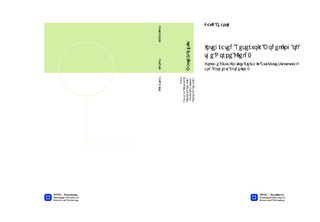| dc.description.abstract | ABSTRACT The purpose of this thesis project work is to build reservoir models (structural, facies and Petrophysical property models) of the different reservoir surfaces using integrated data sets (seismic, wells, fault sticks, eclipse models, horizon surfaces) of the Norne field which is located in blocks 6608/10 and 6508/1 in the southern part of the Nordland II area. Different visualizations techniques, volume rendering and seismic attributes were applied to aid the seismic interpretation and to provide detailed evaluation/integration of the data. 3D seismic interpretation for the whole seismic volume within the reservoir section was done manually with controlled input surfaces/reflectors of the Top horizons of the Not and Åre Formations. Fault and surfaces interpretation of the reservoir were generated as key inputs in the modeling process The structural 3D grid skeleton and models were generated with critical inputs of the manually interpreted faults/horizons, using different qualitative/quantitative templates in Petrel. This was followed by well interpretation and upscaling to provide discrete facies which are needed in populating the structural models of each of the reservoir surfaces. A probabilistic facies model was done to capture the proportion of the spatial dimensions of each discrete facies in the model frame. The initiation of this study involves quantitative data quality controls and management of inputs files into the Petrel window, qualitative control involves transferring geologic licenses/understanding to the various interpretations in the visualization schemes, seismic interpretation and reservoir modeling templates. The combination of different data type and idea (volumes, wells, top surfaces, and fault sticks) types means that the user must have a multivariate understanding (Geologic, Geophysical, Petrophysical, Geostastistic, Geo-Modeling and Reservoir Engineering) in other to integrate the data sets and deliver the models. Eleven wells were used in reference to the Top surface of the Not, Åre Top surfaces and Statoil Reference report of the field, to deliver and control the seismic interpretation. A wedge shape structure was observed in the reservoir section. Typically, minor and major faults were interpreted as forming compartments in the reservoir, which were interpreted across the different lines. The structural framework in the field was largely defined by the Norne Horst and associated faults, with the erosional surface of the BCU with internal sub unconformities observed. The property facies model of the reservoir surfaces (Garn, Ile, Tofte, and TIlje) suggest that the Norne Horst and sub relief structures are mainly sand rich, which provides additional prospect indicators in exploring the field | nb_NO |

